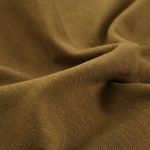Are you tired of wrinkled clothes? Look no further! In this article, we will provide you with six proven techniques for effective ironing.
Whether you’re a novice or an experienced ironer, these tips will help you achieve wrinkle-free perfection. Learn how to choose the right iron, prepare your garments, and master proper ironing technique.
We’ll even cover handling delicate fabrics and troubleshooting common ironing issues. Say goodbye to creases and hello to crisp, professional-looking attire.
Table of Contents
Choosing the Right Iron
When choosing the right iron for effective ironing, take the time to consider your specific needs and preferences. Selecting the appropriate iron is crucial in achieving the best results.
There are various factors to consider when making your decision. Firstly, consider the type of fabric you’ll be ironing the most. Different irons have different heat settings and steam capabilities, so ensure that the iron you choose can handle the fabrics you commonly work with.
Additionally, consider the size and weight of the iron. If you have a lot of ironing to do, a lighter iron may be more comfortable to use for extended periods. On the other hand, if you have large items like curtains or bed sheets to iron, a larger ironing surface can be beneficial.
Lastly, think about any additional features or accessories that might be important to you. Some irons come with built-in water tanks for continuous steam, while others have retractable cords or self-cleaning functions.
Preparing Your Garments
To effectively prepare your garments for ironing, begin by sorting them according to their fabric type and level of wrinkling. This step is crucial for efficient ironing time management and achieving the best results. Separate your clothes into different piles for delicate fabrics, such as silk or lace, and sturdier materials like cotton or denim. This way, you can adjust the iron temperature accordingly and avoid damaging your clothes.
Once you have sorted your garments, it’s time to set up your ironing board. Ensure that it’s stable and at a comfortable height for you to work on. Adjust the board’s height if necessary, so that you can maintain good posture while ironing. A well-organized ironing board setup will enable you to move smoothly and swiftly through your pile of clothes.
Before you begin ironing, make sure that your iron is clean and in good working condition. Remove any residue from the soleplate and check that the steam function is functioning correctly. This will ensure that your iron glides smoothly over the fabric and produces crisp, wrinkle-free results.
Taking the time to prepare your garments properly and setting up your ironing board correctly will make the ironing process much more efficient and effective. With these steps in place, you’ll be well on your way to achieving professional-looking results every time.
Proper Ironing Technique
To achieve optimal results when ironing, it’s crucial to understand the ideal ironing temperature for different fabrics and how to prevent damage to your garments. By using the correct temperature setting, you can effectively remove wrinkles without causing harm.
Additionally, employing proper techniques like using a pressing cloth and ironing in a back and forth motion can help maintain the integrity of your clothes.
Ideal Ironing Temperature
Set the iron to the appropriate temperature for optimal results and ensure a proper ironing technique. Here are three key factors to consider when it comes to achieving the ideal ironing temperature:
-
Fabric type: Different fabrics require different temperatures. Delicate fabrics like silk and chiffon should be ironed at a low or medium setting, while cotton and linen can handle a higher heat.
-
Ironing time management: Ironing too quickly or leaving the iron on one spot for too long can result in damage to the fabric. Keep a steady pace and move the iron smoothly across the garment to avoid burning or scorching.
-
Ironing board selection: A sturdy and well-padded ironing board can help distribute the heat evenly and provide proper support for your garments. Choose a board with a heat-resistant cover to prevent any mishaps.
Preventing Fabric Damage
Take care to iron your garments using the proper technique to prevent any damage to the fabric. One of the main concerns when ironing is avoiding scorch marks and preventing shine on fabrics. To help you achieve this, refer to the table below which outlines the key steps to follow for a successful ironing session.
| Ironing Technique | Description |
|---|---|
| Use the right temperature setting | Adjust the iron’s heat based on the fabric type. Start with a low temperature and gradually increase if needed. |
| Iron inside out | This protects delicate fabrics from direct heat and reduces the risk of shine. |
| Avoid pressing too hard | Apply gentle pressure to prevent flattening or damaging the fabric’s fibers. |
| Use a pressing cloth | Place a thin cotton or muslin cloth between the iron and the fabric to prevent scorch marks and shine. |
Handling Delicate Fabrics
When it comes to handling delicate fabrics, there are a few important points to keep in mind.
First, make sure to control the temperature of your iron to avoid damaging the fabric.
Secondly, consider whether or not to use steam, as some delicate fabrics may be sensitive to moisture.
Lastly, remember to always iron delicate fabrics inside out to protect the surface from direct heat.
Temperature Control Tips
To handle delicate fabrics with care, you should adjust the iron’s temperature accordingly. Here are three temperature control tips to help you iron your delicate fabrics effectively:
-
Read the fabric label: Before ironing, always check the fabric label for recommended ironing temperatures. Different fabrics require different heat settings to avoid damage.
-
Start with a low temperature: When ironing delicate fabrics, it’s best to start with a low temperature and gradually increase if needed. This will prevent scorching or burning the fabric.
-
Use a pressing cloth: For extra protection, place a thin cloth, such as a cotton handkerchief or a tea towel, between the iron and the delicate fabric. This will help distribute the heat evenly and prevent direct contact with the fabric.
Steam or No Steam
If you want to handle delicate fabrics effectively, you should consider whether to use steam or not.
When it comes to ironing delicate fabrics, using steam can have its pros and cons. The pro of using steam is that it helps to relax the fibers in the fabric, making it easier to remove wrinkles. However, the con is that too much steam can cause water spots or even damage the fabric.
An alternative method for handling delicate fabrics is to use a dry iron. This method eliminates the risk of water spots and potential damage. Another alternative is to place a thin cloth, like a pillowcase, between the iron and the fabric to protect it.
Ultimately, the decision of whether to use steam or not depends on the specific fabric and its care instructions.
Ironing Inside Out
To handle delicate fabrics effectively, start by ironing them inside out. This simple technique can help you avoid wrinkles and protect the fabric from direct heat.
Here are three reasons why ironing inside out is beneficial:
-
Preserves the fabric: By ironing delicate fabrics inside out, you minimize the risk of damaging the outer surface. This is especially important for fabrics like silk and satin, which can easily develop shiny spots when ironed directly.
-
Protects delicate details: Ironing inside out is particularly crucial when dealing with fabrics that have pleats or intricate designs. By ironing the fabric from the inside, you ensure that the pleats retain their shape and the delicate details remain intact.
-
Prevents color fading: Some delicate fabrics are prone to color fading when exposed to direct heat. Ironing them inside out helps to preserve the vibrancy of the fabric and maintain its original color for longer.
Ironing Troubleshooting Tips
Having trouble with stubborn wrinkles? Try adjusting the temperature on your iron.
It’s important to identify common ironing mistakes in order to effectively remove those stubborn wrinkles. One common mistake is ironing clothing while it’s still damp. This can actually set the wrinkles in place instead of removing them. Make sure your clothes are completely dry before ironing them.
Another mistake is using the wrong ironing technique. When ironing, always move the iron in a straight back and forth motion. Avoid circular motions as they can stretch the fabric and create more wrinkles. Additionally, not using enough pressure while ironing can result in wrinkles not being fully removed. Apply firm pressure to the iron as you glide it over the fabric.
Storing and Maintaining Your Iron
Store your iron in a cool and dry place to maintain its functionality and prevent rust. Proper storage and maintenance are essential to prolong the lifespan of your iron and ensure it works efficiently. Here are three important tips to help you clean and care for your iron:
-
Cleaning instructions: Regularly clean your iron to remove any residue or build-up that may affect its performance. Follow the manufacturer’s instructions for cleaning, as different irons may require different methods. Generally, you can use a mixture of water and vinegar or a commercial iron cleaner. Remember to unplug the iron and allow it to cool down before cleaning.
-
Ironing board setup: When using your iron, ensure that your ironing board is clean and free from any debris. A dirty or uneven surface can damage the iron’s soleplate and affect the quality of your ironing. Additionally, make sure the ironing board cover is smooth and secure to avoid any wrinkles or creases in your garments.
-
Empty water reservoir: If your iron has a water reservoir for steam, make sure to empty it after each use. Stagnant water can lead to mineral deposits and clog the steam vents, affecting the iron’s performance. Always empty the water reservoir and allow the iron to cool before storing it.
Frequently Asked Questions
How Does the Wattage of an Iron Affect Its Performance?
The wattage of an iron directly affects its performance. Higher wattage means faster ironing speed. The more power the iron has, the quicker it heats up and maintains a consistent temperature, resulting in efficient and effective ironing.
Can I Use Tap Water in My Iron, or Should I Use Distilled Water?
You can use tap water in your iron, but using distilled water is better. Distilled water prevents mineral buildup, leading to a longer lifespan for your iron and better results when ironing.
How Often Should I Clean the Soleplate of My Iron?
To keep your iron working effectively, it’s important to clean the soleplate regularly. The cleaning frequency depends on how often you use it and the type of fabric you iron. There are various methods for cleaning the soleplate, such as using vinegar or a soleplate cleaner.
What Is the Recommended Ironing Temperature for Different Types of Fabrics?
To iron delicate fabrics, it’s important to know the recommended ironing temperature. Different fabrics have different needs, so check the garment’s label or use a low temperature setting. Use the best techniques to remove stubborn wrinkles.
Can I Use an Ironing Board Cover With a Pattern, or Should It Be Plain?
You can use an ironing board cover with a pattern if you prefer. However, using a plain ironing board cover has its benefits, like preventing any color transfer and ensuring a smooth ironing surface.
- Recycling Nonwoven Fabrics: Is It Possible? - July 11, 2025
- Recycling Nonwoven Fabrics: Is It Possible? - July 11, 2025
- Recycling Nonwoven Fabrics: Is It Possible? - July 11, 2025




